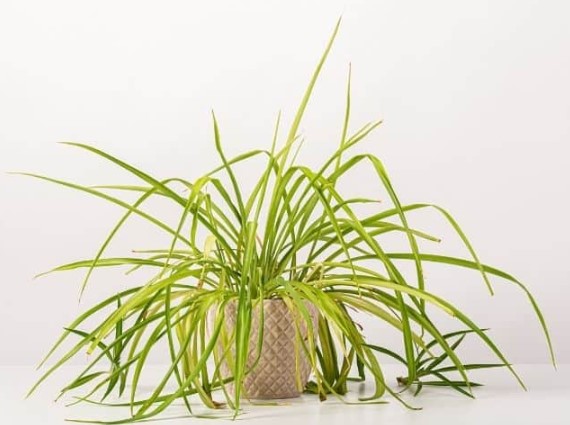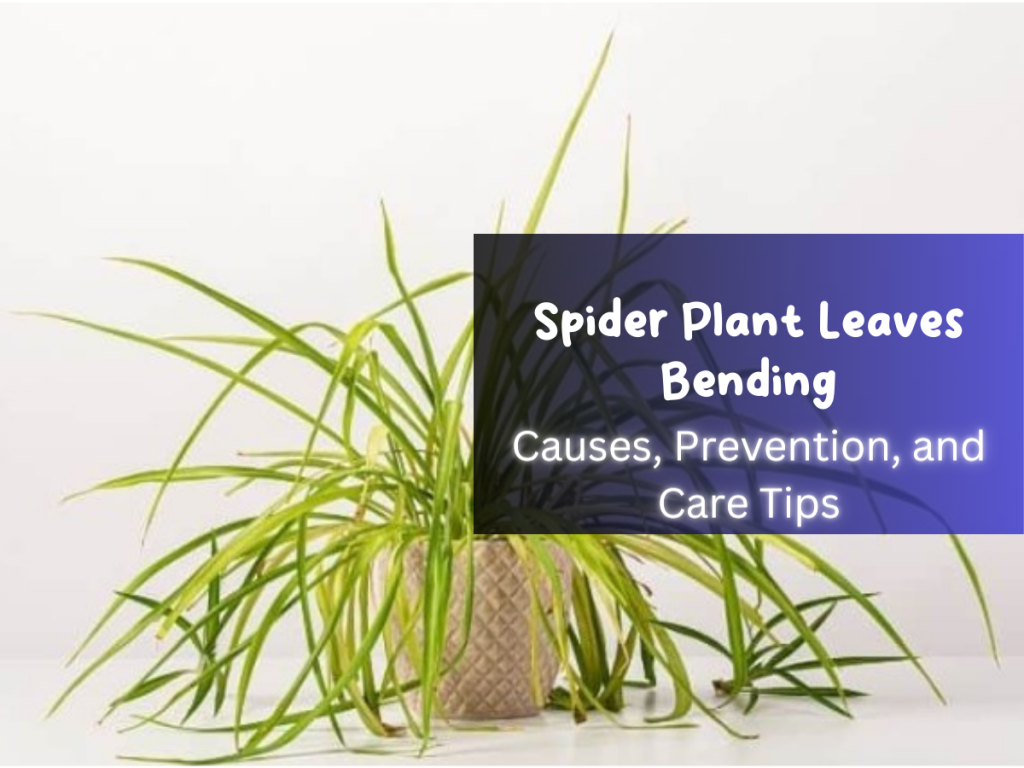Spider plants (Chlorophytum comosum) are popular houseplants known for their attractive foliage and air-purifying qualities. However, if you notice that the leaves of your spider plant are bending or drooping, it may indicate an underlying issue that needs attention. This article will explore the common causes of spider plant leaves bending, methods to prevent it, and essential care tips to keep your spider plant healthy and thriving.
Insufficient Light
Insufficient light is one of the primary reasons why spider plant leaves may bend or sag. Spider plants require bright, indirect light to thrive. When they don’t receive enough sunlight, their leaves may elongate and start turning towards the light source for more exposure. Insufficient light can also result in weak and leggy growth.
Solution: Place your spider plant near a filtered or indirect sunlight window. If natural light is limited, you can supplement it with fluorescent grow lights placed a few feet above the plant to provide adequate illumination. Remember to rotate the plant periodically to ensure even growth.

Overwatering or Underwatering
Improper watering practices can cause stress to your spider plant, leading to leaf bending. Overwatering can result in root rot, while underwatering causes dehydration and nutrient deficiency. Both conditions can lead to weak and floppy leaves.
Solution:
- Water your spider plant thoroughly, allowing the top inch of soil to dry out between waterings.
- Ensure proper drainage in the pot to prevent waterlogged conditions.
- Monitor the moisture level of the soil and adjust your watering schedule accordingly.
Environmental Conditions
Spider plants prefer a warm and humid environment. Excessive heat or dry air can cause the leaves to curl, sag, or bend. Temperature fluctuations and drafts can also stress the plant and lead to leaf problems.
Solution: Maintain a consistent temperature range between 60°F to 75°F (15°C to 24°C) and avoid placing your spider plant near air vents, radiators, or drafts. To increase humidity, you can mist the leaves regularly or place the plant on a tray filled with water and pebbles.
Nutrient Deficiencies
Nutrient deficiencies, particularly in essential macronutrients like nitrogen, potassium, and phosphorus, can weaken the plant and cause leaf bending. Lack of proper nutrition can make the leaves pale, thin, and more susceptible to bending or drooping.
Solution: Feed your spider plant with a balanced, water-soluble fertilizer once a month during the growing season (spring to summer). Choose a fertilizer specifically formulated for houseplants and follow the instructions on the package; This will provide the necessary nutrients and help prevent deficiencies.
Pest Infestation
Spider mites and other pests can attack spider plants, sucking the sap from the leaves and causing damage. If your plant is infested, it may exhibit signs such as curled leaves, webbing, or discoloration.
Solution:
- Inspect your spider plant regularly for signs of pests.
- If you detect an infestation, isolate the affected plant to prevent the pests from spreading.
- Use an organic insecticidal soap or neem oil to treat the infested plant, following the instructions carefully.

Conclusion
Spider plant leaves bending can be an indication of various underlying issues. By understanding the causes and implementing the appropriate solutions, you can prevent further leaf problems and ensure the health and vitality of your spider plant. Remember to provide adequate light, water correctly, maintain a suitable environment, provide proper nutrition, and watch out for pests. With good care, your spider plant will thrive and delight you with its graceful arching foliage for years. Read article about Aglaonema Maria Care Guide and Tradescantia Nanouk Brown Spots in Avi Hoffman Garden.
FAQ
There can be several reasons why spider plant leaves bend and break:
a) Insufficient light: Spider plants require bright, indirect light to grow properly. The leaves may bend and become weak if they don’t receive enough sunlight.
b) Overwatering or underwatering: Improper watering practices can lead to stress and weaken the leaves. Overwatering can cause root rot while underwatering results in dehydration and nutrient deficiency.
c) Environmental conditions: Spider plants prefer a warm and humid environment. Excessive heat, dry air, temperature fluctuations, or drafts can cause the leaves to bend or break.
d) Nutrient deficiencies: Lack of essential nutrients, such as nitrogen, potassium, or phosphorus, can weaken the plant and result in bending or breaking of the leaves.
e) Pest infestation: Spider mites and other pests can attack spider plants, causing damage to the leaves, which may bend or break.
Identifying the cause will help you address the issue and take appropriate measures to prevent further damage.
In most cases, cutting off bent leaves on a spider plant is unnecessary unless they are severely damaged or dead. Spider plant leaves can recover and return to their standard shape properly. However, if the leaves are extensively bent, broken, or yellowed, you can trim them off using clean, sharp pruning shears. Trimming off damaged leaves can improve the plant’s overall appearance and promote healthier growth.
To fix a droopy spider plant, follow these steps:
a) Check the soil moisture: Ensure you are correctly watering your spider plant. Allow the top inch of soil to dry out between waterings, and avoid overwatering or underwatering, as both can cause drooping. Adjust your watering schedule accordingly.
b) Provide adequate light: Ensure your spider plant receives sufficient bright, indirect light. Insufficient light can result in weak and droopy growth. Place the plant near a window with filtered sunlight or supplement with grow lights if natural light is limited.
c) Maintain proper humidity: Spider plants prefer a humid environment. Increase humidity by misting the leaves regularly or placing the plant on a tray filled with water and pebbles. Avoid placing the plant near dry air sources like radiators or air vents.
d) Check for pests: Inspect your spider plant for any signs of pest infestation. Spider mites or other problems can cause stress to the plant, leading to drooping leaves. Treat the infestation using organic insecticidal soap or neem oil.
e) Provide proper nutrition: Ensure your spider plant receives adequate nutrients. Feed it with a balanced, water-soluble fertilizer formulated for houseplants once a month during the growing season; This will help strengthen the plant and prevent drooping.
Addressing these factors can help your spider plant regain its healthy and upright appearance.







